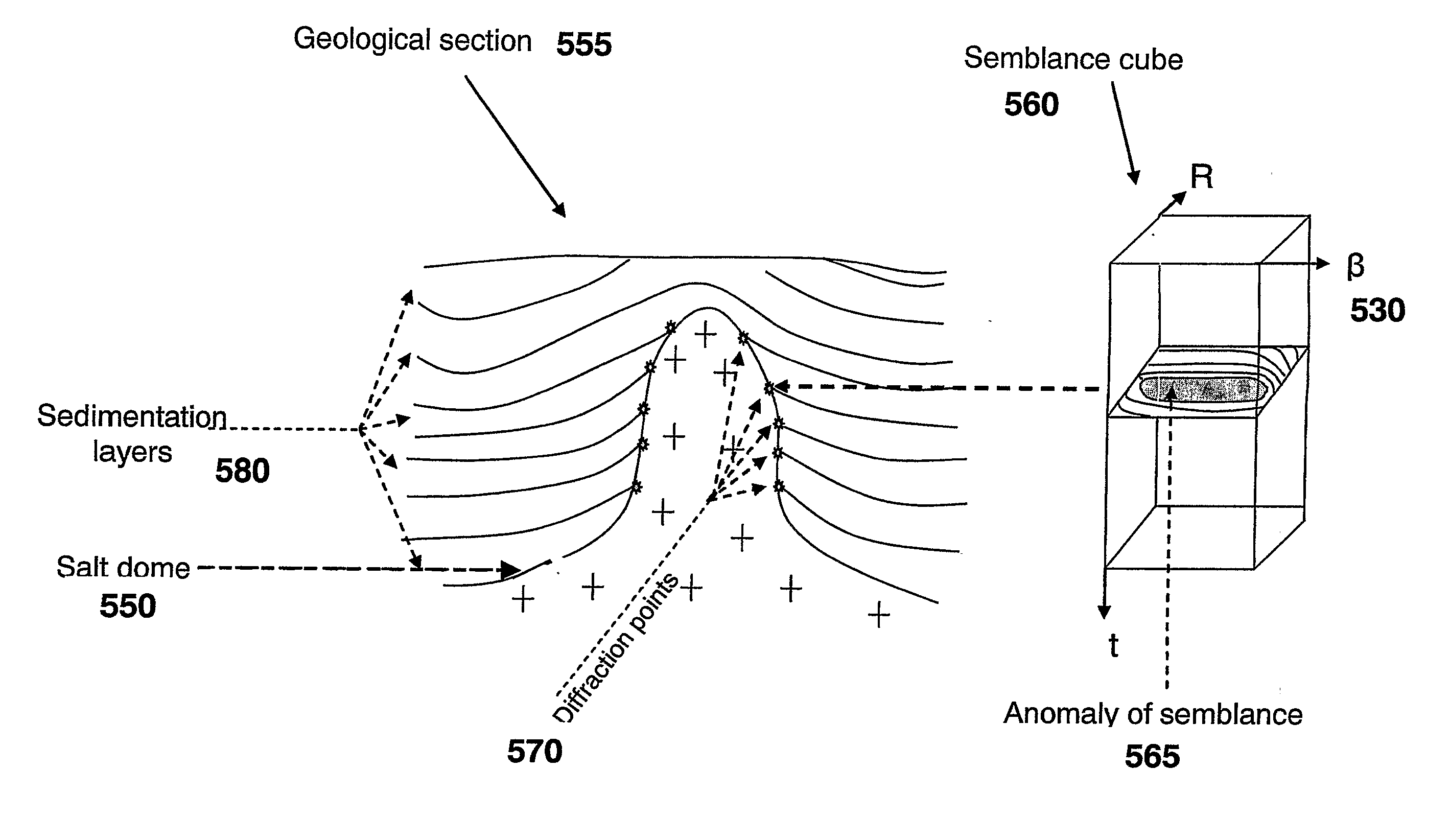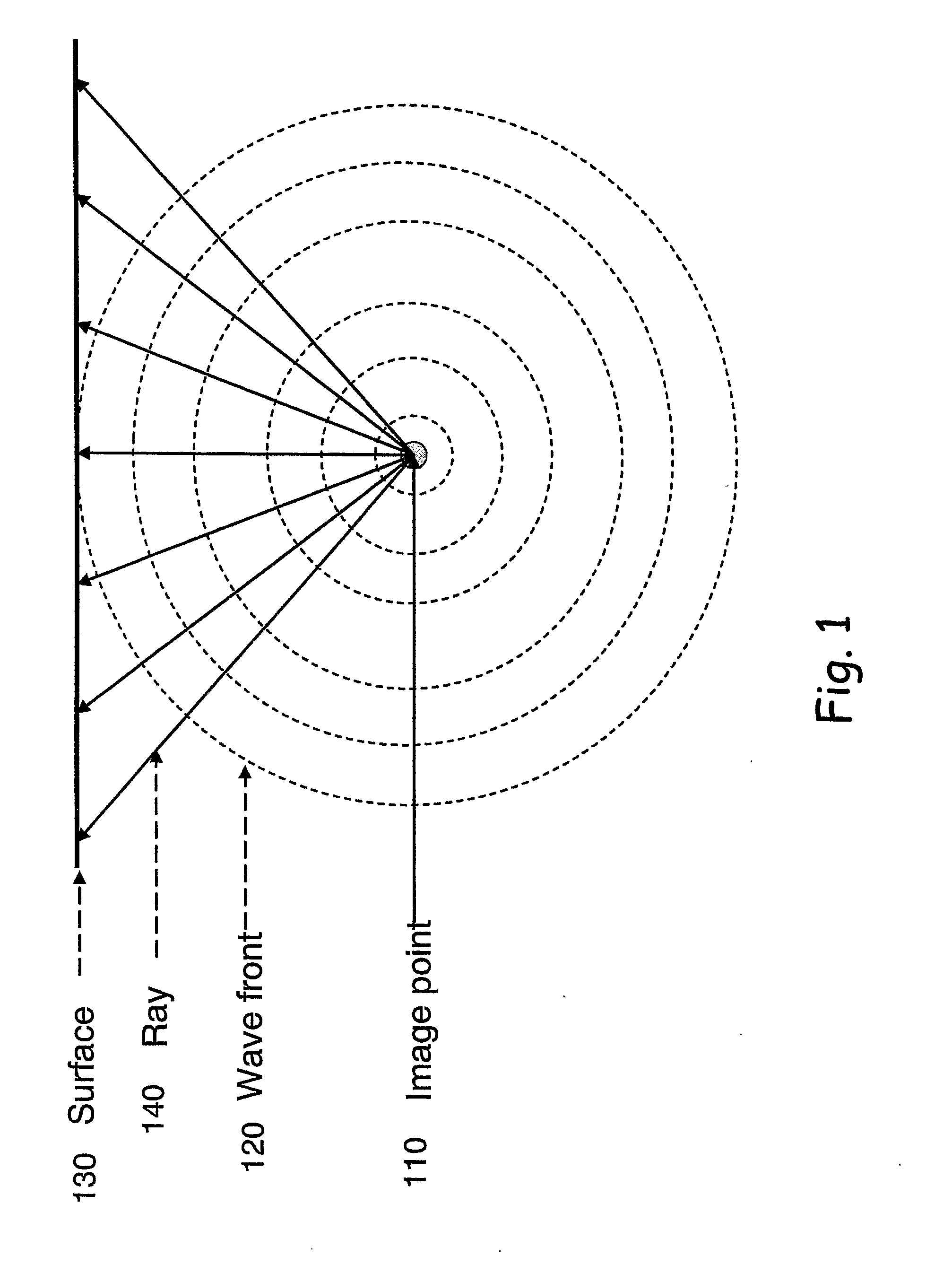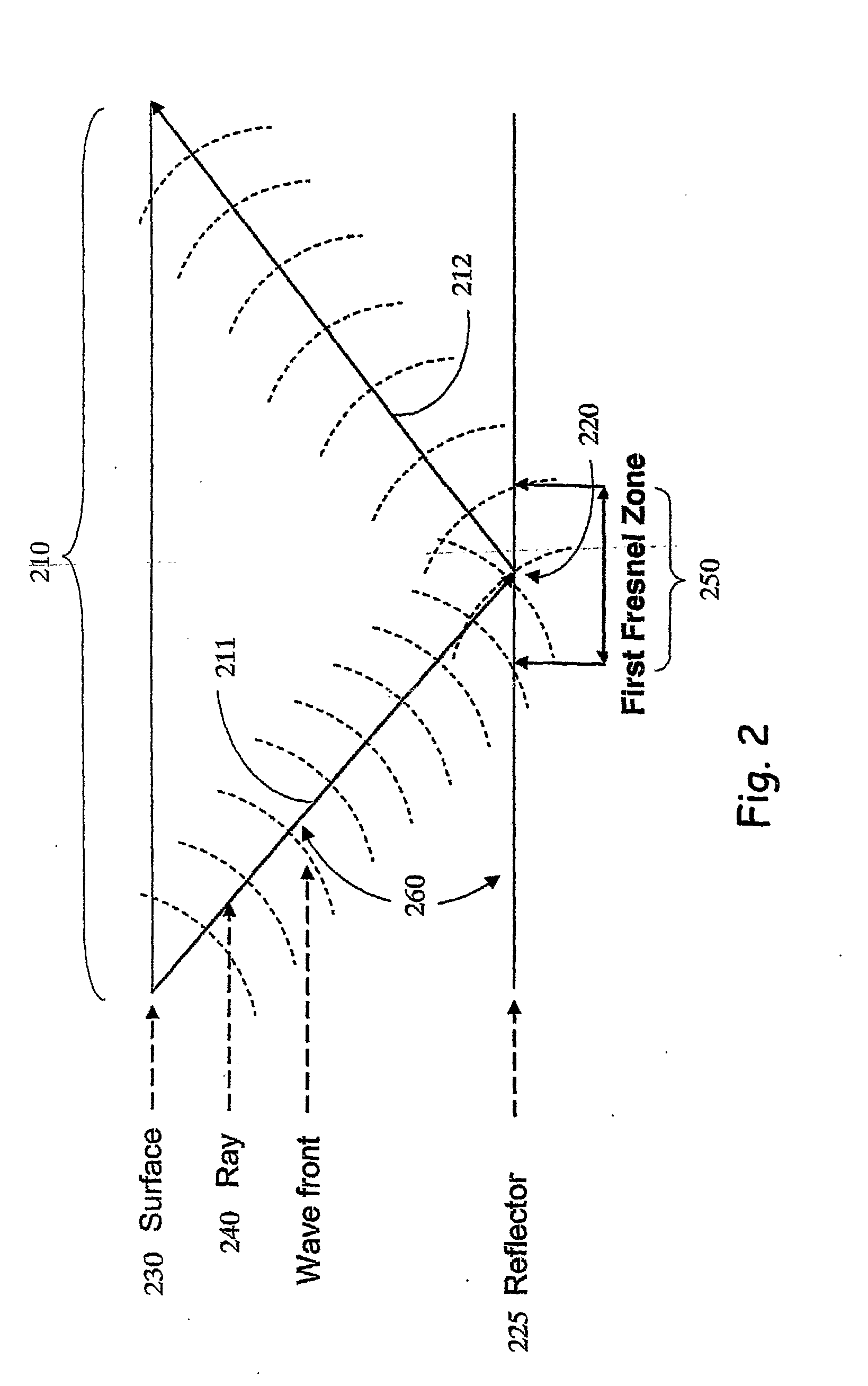Method for identifying and analyzing faults/fractures using reflected and diffracted waves
- Summary
- Abstract
- Description
- Claims
- Application Information
AI Technical Summary
Benefits of technology
Problems solved by technology
Method used
Image
Examples
Embodiment Construction
[0046]The principles and operation of a method and an apparatus according to the present invention may be better understood with reference to the drawings and the accompanying description, it being understood that these drawings are given for illustrative purposes only and are not meant to be limiting.
[0047]Reference is now made to FIG. 1, showing a diagrammatic representation of the diffracted wave spreading from the image point, in accordance with the principles of the present invention. In FIG. 1, the diffracted wave, being extended from the image point 110 on the boundary, distributes energy evenly along the wave front 120 in the ideal case. Thus, the seismic receivers, located evenly on a certain base on the surface 130 above the source of the rays 140 of the diffracted wave, will register fluctuations from it with the approximately identical amplitude.
[0048]FIG. 2 is a diagrammatic representation of the wave distribution within the limits of the aperture 210, comprising an inc...
PUM
 Login to View More
Login to View More Abstract
Description
Claims
Application Information
 Login to View More
Login to View More - R&D
- Intellectual Property
- Life Sciences
- Materials
- Tech Scout
- Unparalleled Data Quality
- Higher Quality Content
- 60% Fewer Hallucinations
Browse by: Latest US Patents, China's latest patents, Technical Efficacy Thesaurus, Application Domain, Technology Topic, Popular Technical Reports.
© 2025 PatSnap. All rights reserved.Legal|Privacy policy|Modern Slavery Act Transparency Statement|Sitemap|About US| Contact US: help@patsnap.com



